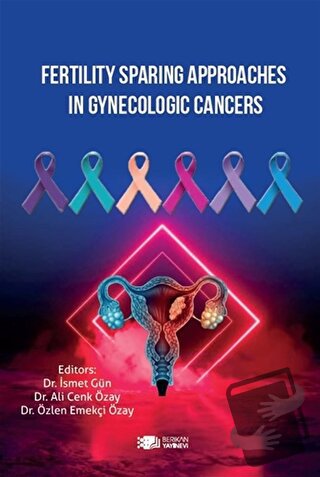
Recently, advances in cancer treatment and increasingearly diagnosis opportunities have increased the life expectancy in cancerpatients, as well as the expectations of the preservation of quality of lifeand fertility in young patients and the studies on these issues. There are nowmany fertility-sparing treatment approaches that we can recommend to women withcancer in their reproductive age. It should not be forgotten that approximately10% of all cancer cases in the world are women of reproductive age under 45years of age. We need to put more effort into maintaining the fertility chancesof these patients.
However, while determining the patients tobe treated with fertility sparing, some criteria should be carefully observed.The most important of these is never to compromise on oncological outcome. Whenevaluating whether the patient is suitable for a conservative approach, thecriterias should be considered individually and objectively. Fertility sparingapproaches are not standard treatment methods for cancer. Patients should begiven extensive and enlightening information about the advantages anddisadvantages of standard treatment and fertility sparing treatment. Of course,the first step of the evaluation in these patients is to clearly demonstratethat the patient is not infertile.
I believe that this book, written byvaluable scientists, will be useful not only for gynecological oncologists butalso for all gynecologists.
| Taksit Sayısı | Taksit tutarı | Genel Toplam |
|---|---|---|
| Tek Çekim | 229,60 | 229,60 |
| 3 | 83,64 | 250,91 |
| 6 | 44,16 | 264,94 |
| 9 | 31,00 | 278,99 |
| 12 | 24,42 | 292,99 |
| Taksit Sayısı | Taksit tutarı | Genel Toplam |
|---|---|---|
| Tek Çekim | 229,60 | 229,60 |
| 3 | 83,64 | 250,91 |
| 6 | 44,16 | 264,94 |
| 9 | 31,00 | 278,99 |
| 12 | 24,42 | 292,99 |
| Taksit Sayısı | Taksit tutarı | Genel Toplam |
|---|---|---|
| Tek Çekim | 229,60 | 229,60 |
| 3 | 83,64 | 250,91 |
| 6 | 44,16 | 264,94 |
| 9 | 31,00 | 278,99 |
| 12 | 24,42 | 292,99 |
| Taksit Sayısı | Taksit tutarı | Genel Toplam |
|---|---|---|
| Tek Çekim | 229,60 | 229,60 |
| 3 | 83,64 | 250,91 |
| 6 | 44,16 | 264,94 |
| 9 | 31,00 | 278,99 |
| 12 | 24,42 | 292,99 |
| Taksit Sayısı | Taksit tutarı | Genel Toplam |
|---|---|---|
| Tek Çekim | 229,60 | 229,60 |
| 3 | 83,64 | 250,91 |
| 6 | 44,16 | 264,94 |
| 9 | 31,00 | 278,99 |
| 12 | 24,42 | 292,99 |
| Taksit Sayısı | Taksit tutarı | Genel Toplam |
|---|---|---|
| Tek Çekim | 229,60 | 229,60 |
| 3 | 83,64 | 250,91 |
| 6 | 44,16 | 264,94 |
| 9 | 31,00 | 278,99 |
| 12 | 24,42 | 292,99 |
| Taksit Sayısı | Taksit tutarı | Genel Toplam |
|---|---|---|
| Tek Çekim | 229,60 | 229,60 |
| 3 | - | - |
| 6 | - | - |
| 9 | - | - |
| 12 | - | - |
Recently, advances in cancer treatment and increasingearly diagnosis opportunities have increased the life expectancy in cancerpatients, as well as the expectations of the preservation of quality of lifeand fertility in young patients and the studies on these issues. There are nowmany fertility-sparing treatment approaches that we can recommend to women withcancer in their reproductive age. It should not be forgotten that approximately10% of all cancer cases in the world are women of reproductive age under 45years of age. We need to put more effort into maintaining the fertility chancesof these patients.
However, while determining the patients tobe treated with fertility sparing, some criteria should be carefully observed.The most important of these is never to compromise on oncological outcome. Whenevaluating whether the patient is suitable for a conservative approach, thecriterias should be considered individually and objectively. Fertility sparingapproaches are not standard treatment methods for cancer. Patients should begiven extensive and enlightening information about the advantages anddisadvantages of standard treatment and fertility sparing treatment. Of course,the first step of the evaluation in these patients is to clearly demonstratethat the patient is not infertile.
I believe that this book, written byvaluable scientists, will be useful not only for gynecological oncologists butalso for all gynecologists.










